It is simply impossible to imagine the summer landscape of urban streets and sites of private houses without bright and unforgettable petunia. This gentle and recognizable flower is decorated not only by flower beds and lawns, but also balconies of high-rise buildings, as well as loggias and terraces of cottages.
Due to its variety of colors, Petunia is one of the main decoration of the flower, while not requiring special efforts to grow and care. Putting this flower in myself in a flower garden or on the flower, you will certainly be satisfied with the resulting garden composition.
In this article we will look at the features and description of many years of petunia, we describe the main and most popular types and varieties of this incredible flower. And also describe in more detail about the main nuances of the agricultural machinery growing petunia.
Features and description of perennial petunia
Petunia refers to the kind of perennial herbaceous or semi-stabilized plants of the family of the Polenic. The natural habitat is the tropics, in particular countries such as Brazil, Uruguay, Argentina, Bolivia. Although sometimes in Nature Petunia is found in North America.
The name of this flower went from the Brazilian word Petun, which translated "tobacco". This is not with simple, because Petunia is actually a relative of the real tobacco. Cultivized and spread long-term petunias from the 18th century.
Many fans of this beautiful flower are still doubted, not knowing the 100% petunia of a long-term or annual. By nature, this plant is a perennial, but in the conditions of our climate it is impossible to grow petunia for several years in the open soil. Our weather conditions are not suitable for wintering this beauty. Therefore, preferably in our petition gardens is grown as an annenial flowering plant. Although if you wish, you can easily extend the life of this beautiful flower for several years. Just enough for the winter to transplant herbal of petunias in a flower pot and put on a windowsill.
Description Perennial Petunia:
- Perennial petunias is an herbaceous plant, as well as semi-stammer.
- The stalks of this plant are sharpening or reprehension, which are very thickly branched, slightly pubescent. Height can reach from 15 to 70 cm, depending on the specific type and variety of petunia.
- All stems are plentifully covered with oval solid leaves. In diameter, the leaves can reach 5-12 cm. To the stalk they are attached alternately, they are green or dark green in color. Like stems, petunia leaves are slightly publisted.
- Flowers perennial petunias are attached on short bluers to a stalk. Are single.
- Form resemble a funnel, you can meet the flowers of the right and irregular shape, terry and fringe.
- Flowers vary and painting. Shades just affect the imagination. You can meet a long-term petunia of pink, red, purple, lilac, white or blue. As well as flowers with contrast stripes, border, halo or star.
- Plugging a long-term petunia starts from July and pleases the eye with its paints to the most frosts.
- After brutening on the branches, a fruit is formed in the form of a small box with small seeds.
- Since most often the long-term petunia is grown in the open ground as an annual plant, you can try to extend the life of this beautiful flower. In the fall dig up a bush with a lore of the earth and put it in a pot. Then place it in the basement, and at the beginning of the spring, we will get on the sunlight and plenty. Petunia roots will begin to revive, and you will get a healthy and strong plant.
- Perennial petunias is distinguished by abundant flowering and absolute unpretentiousness to care.
- In nature, there are only about 25 species of perennial petunias, these flowers are also distributed in several classes.
Popular views and varieties of perennial petunia
Perennial Petunia is 25 species that are very different from each other. However, there is another classification according to which Petunia is divided into several basic groups. This is a large-flowered petunia, a fine-cexual, ampel or garden group, floribunda, terry petunia. Let us consider in more detail these most popular groups of perennial petunias that have won the hearts of many gardeners.
Large-flowered petunia
The second name of this group of Petunia is Grandiflora. These perennial flowers are among the most popular and common. Based on the title, it is clear that such a petunia is characterized by large flowers. On average, the flower diameter of the multi-year large-flowered petunia reaches 8-12 cm. This petunia group is divided into several subgroups:
- large-flowered high (up to 60 cm in height);
- large-flowered low (25-30 cm in height);
- the large-flowered fringe high and low (in height reaches from 25 to 75 cm);
- the large-flowered superior high and low (in the height of the plant reaches from 30 to 75 cm);
- large-flowered terry (height 50-60 cm).
Flowers of this group are distinguished by various shades and shapes. Main varieties:
- Petunia varieties "Hit Parade". Petunia of these varieties in height reach 25-30 cm and differ in a variety of colorful colors.
- Petunia varieties "Picotics". 25 cm. A distinctive feature of such petunia is a corrugated edge of flower petals, as well as the presence of a wide white border along the edge.
- Petunia varieties "Perf Pirouette." The flower of these varieties is characterized by a purple-purple tint, a flower in the form of a terry.
Multi-flower petunia
The second name of this group is multiflora. They differ in smaller flowers, but bloom begins much earlier than large-flowered petunias. During the active flowering period, a large number of flowers dissolve on the bush, the average diameter of which reaches 5 cm. Also, in contrast to large-flowered varieties, representatives of this group are distinguished by their unpretentiousness and are becoming more popular every year.
Main varieties of multi-flower petunia:
- Series "Fantasy". This includes 9 hybrid varieties with many years of petunias, which are in height reach 20 cm. They differ from various colorful colors: from white to burgundy-raspberry, monophonic and with contrast residences.
- Series "Mirage". Includes 13 hybrid grades of terry petunias, the flowers of which in diameter reach 6-9 cm. The color is also very diverse.
Ampel or Garden Perennial Petunia
Ampel perennial petunias differs from other groups with stems descending to Earth. Thanks to this, it looks great in suspended porridge on balconies, verandas and terraces. This group of petunition is characterized by unpretentiousness and resilience to adverse weather conditions. The varieties of this group are also called garden or balcony.
Main Amplishi Maintenance:
- Series "Copter". It is a petunia with small flowers, which in diameter barely reach 5 cm. They differ in a large variety of colors.
- Series "Surfinia". In most of their varieties, flowers are reached in diameter 6-9 cm.
Petunia Floribunda
This group of perennial petunition is intermediate between large-flowered and multi-flower petunias. Flaoribunda flowers collected the distinctive features of two species. From large-flowered, they got large flowers, and from a multi-flowered group - unpretentiousness in care. However, Petunia Floribunda looks beautifully only in large-scale landings, as they are very poorly branched. Flowers are painted in various shades.
Main Sortewater:
- Series "Sonya". Includes 11 hybrid varieties that grow a maximum of 25 cm in height. Coloring is a monophonic and with contrasting streaks. There are also varieties, the colors of which in the middle there is a white star.
Petunia Mahova
Perennial Petunia Makhrovka is the true queen of the garden, the flowers of which their appearance will decorate any site. It features a beautiful shape of flowers similar to corrugated paper. Main Sortewater:
- "Double Cascade". The semi-stabbed petunia, which in height reaches 25-35 cm. It is distinguished by large and lush flowers, which in diameter can reach 13 cm.
- Series "Pirouette". A distinctive feature of plants of this group of varieties is considered the presence of a beautiful corrugated border on the edge of the large and proper flower.
Perennial petunias cascade
In contrast to ampel petunia, which only runs down, cascade can grow to the sides, up and down. At the same time, individual stems can reach 1.5-2 m. Thanks to such a feature, the pot with a plant looks simply gorgeous. From the famous varieties can be noted "Silver", "Cherry", "Rose".
Methods of multiplication of petunia many years
Perennial petunias multiply seeds and vegetatively, it all depends on the specific type of plant. The terry varieties of petunia give few seeds, so there is only one way of reproduction for them - shifting. Let's consider each other separately.
Petunia reproduction with many years of seeds
- First of all, it is necessary to choose the right petunia seeds. It is best to get seeds of one particular variety, as when planting mixed petunitions, you can eventually get not exactly what you expect. Also give preference to the daisy seeds, i.e. Seeds that are specifically covered with shell from growth stimulants and nutrients.
- Next prepare the soil, which should consist of equal parts of peat, humid, turf and sand.
- Before planting seeds, the soil must necessarily shed water well. Seed seeds in March.
- Carefully treat the selection of seed containers. Plastic containers for food with covers are suitable. So you will receive mini-greenhouses.
- Seeds do not plunge into the soil, and evenly distributed over the surface mixed with sand.
- After sowing, the soil sprinkles from the spray, then the container is closed with a lid or glass.
- The optimal temperature for germination of petunia seeds is 20-25 degrees of heat.
- During the germination, it is periodically necessary to spray the soil and turn the glass.
- After about 10 days, the seedlings will begin to slander.
- After the appearance of 2-3 strong leaves, you can take a picking seedlings of Petunia many years of.
- You can use conventional plastic cups or jars from yogurt to dive.
- In the ground, seedlings are planted at the end of April, when the threat of return freezers disappears.
Seed seeds can be immediately in open ground, but it is necessary to do it before May.
Reproduction of long-term petunia
Petunia can also be multiplied with cuttings, in this case you will keep 100% all the varietal features of the plant. Most often, this method is used for particularly delicate types of petunias, such as ampel and cascade. Perennial Petunia from cuttings will bloom for a couple of weeks earlier than flowers derived from seeds.
- In August, pick up a big and strong bush of Petunia and mark it in a wide pot.
- Next, it is necessary to trim a bit of the plants a little, leaving an average of 15 cm.
- It is necessary to store petunia in a cool place and periodically water.
- In April-May, you can proceed to cutting cuttings. For them, side shoots are used with a length of 7-9 cm.
- Be sure to remember that it is necessary to plant cuttings into containers immediately after trimming. It is only necessary to handle their growth stimulant.
- Dry stalks in separate containers. The soil must consist of equal parts of sand, peat, humus and turf.
- At room temperature and good lighting, the cuttings are rooted in 1-2 weeks.
- Flowering petunia 2 months after the rooting of the cuttings.
Preparation before planting petunia many years
To get beautiful and blooming perennial petunias, you must be carefully prepared. Before landing, it is important to pick up a high-quality planting material and find a good place where your petunia will delight you for a long time. It is also important to qualitatively prepare the ground under the landing.
Selecting planting material
High-quality seedlings of perennial petunia is a guarantee of obtaining gorgeous flowering bushes. Therefore, if you purchase landing material in specialized stores or nurseries, pay attention to its appearance. All seedlings should be without damage, bright green. By growth, all seedlings should be the same.
If you buy seeds to seedlings, give preference to the driving. They cost more, but you will get germination for a shorter time. It is important to buy seeds only in specialized stores or in proven people.
Selection of places for landing
Perennial petunia prefers to grow on well-lit garden or flower bed. Therefore, find a place with a sufficient amount of sunlight, but remember that petunias should be protected from a strong wind.
When selecting a landing place, consider the petunia variety you selected. Ampel and cascading petunias are planted in suspended pots and cass, as well as in containers that are attached on balconies or terraces. Large-flowered and multi-flowered petunias are planted on the flower beds, so it is important to consider the flower composition you want to get in the end.
Soil preparation before landing
It is very important before planting well to populate the soil, it is desirable to make a humoring into it. But only not fresh manure - it can harm petunias. Perennial Petunia grows well on sabeled or driving soils. The optimal will be applied to the soil mixture consisting of equal parts of peat, sand, delicate earth and humus. It is also important to create a good drainage layer to eliminate the pouring of flowering plants. From this they can start grew.
Petunia landing process
It is possible to start the open ground in the second half of May, when the threat of return night frosts will disappear. It is best to plant seedlings in cloudy weather or in the afternoon closer to the evening.
- Before boarding, the containers with a repeated perennial petunia must be fine with water.
- Prepared in advance of the soil to sprinkle and prepare the planting wells. One well must be about 10 cm deep, as the seedlings are planted along with an earthen room.
- If you plant a petunia along all the flower beds or several pieces in one pot, then definitely retreat between the wells a distance of 25-30 cm.
- If the site you picked up in lowland, then it is best to prepare a layer of drainage at the bottom of the landing hole. Thus, you protect the plant from water stagnation in the roots.
- Next, carefully remove the seedlings of Petunia with an earthen room and put in the wells. After that, carefully tamper the earth around the plant.
- After landing, the seedlings of perennial petunia must be abundantly pouring.
- It is important to pour a mulch layer over the soil to prevent excessive evaporation of moisture. A peat or dry sawdust can be used as a mulch.
Features of the care of long-term petunias in the open soil
Further growth and flowering of your long-term petunia will directly depend on the constant and good care for this plant. It is how attention to this bright flower will allow him to be blossoming to the coldests.
Watering
Perennial Petunia is a drought-resistant plant and can do without water for a long time. However, this will certainly affect the brightness and pomp flowering. Therefore, watering should be regular and moderate. Be sure to remember that it is necessary to water only under the root to eliminate water from entering tender flowers. This can lead to their winding. Especially often need to water petunia in hot and dry summer.
Loosening and mulching
The next day, after watering, you can explode the soil around the plants and remove all weeds. Thus, you will avoid the appearance of the peel on the soil, which poorly passes oxygen to the roots. It is necessary to loosen very carefully so as not to damage the gentle stalks of petunia. After loosening, you can pour a layer of mulch around the chest. As a mulch, it is recommended to use a dry peat or sawdust. Mulching will reduce the appearance of weeds and reduce the evaporation of moisture.
Podcock Petunia
Perennial petunias responds very well on making feeding. From their regularity, in essence, the lifestyle and the duration of flowering. You can begin to feed petunia in the second week after planting the plant in open ground. As a fertilizer, it is best to use preparations with a high potassium content, and complex fertilizers are also suitable. You can also apply the infusion of a cowboy, which stimulates the flowering of petunia. Alternatively, you can purchase special preparations for spraying precisely Petunia. For example, "crystalon green", "Plantafol". The frequency of the feeding during the vegetation and flowering of petunias - every 10 days.
Care for petunias during flowering
During abundant flowering, perennial petunias is very important to periodically remove dried buds. They can interfere with the magnificent flowering plants, and when they are removed, you will stimulate the active growth of new buds.
Fighting pests
Perennial petunias is characterized by good endurance, however, with improper care, the plant may become different fungal and even viral diseases. Various pests may also appear on your colors.
Petunia diseases:
- Phytoofluorosis. This disease most often damages petunia. It is manifested by brown spots on the stems. After that, they spread throughout the plant and it dies. Fortofluorosis can be struggling with special antifungal drugs - fungicides. To prevent the appearance of this disease, the seedlings of Petunia are needed.
- Blackleg. Such a disease appears on the prickene stem and spread throughout the plant. Signs: Watery spots, which are in consequences. Measures of struggle: fungicides for the remaining plants. The damaged flower is removed along with a lore earth.
- Gray rot. It is manifested by light brown spots, which are then covered with a light flush. After that, all the plant begins to die. Special drugs of fungicides are helping, "Sorrow", "Integral".
- Brown spotty. The plant begins to yellow, and on the leaves, brown-rusty stains appear. Copper-containing drugs help: potatoeside.
Pests:
- Cute tick. This small red spider appears on the bottom of the leaves. In this case, the plant must be labeled with tobacco solution or insecticide special drugs.
- Aphid. Insects that settle on the bottom of the leaves and feed on the juice of the plant. From this petunia begins to dry out. You can use a soap solution or a drug nicotine-sulfate to combat aphid.
- Bellenka. Most often appears in closed greenhouses. To combat it, preparations are used with a permeter content.
Using long-term petunia in landscape design
The use of perennial petunia in the garden decoration and the site near the house is very diverse. This flower due to its low growth is used for the framing of flower and garden tracks. Very beautiful looks ampel and cascading varieties of petunias in various wooden barrels and pendant porridges. Such kashpo can be attached to trees or specially created supports.
Perennial petunias also serves as decoration of balconies and terraces.
Stock Foto Perennial petunia in landscape design
More clearly to see all the features of the use of this bright flower on the plot on the presented photos.
Petunia is used to decorate balconies
To decorate flowerbed
Perennial Petunia in Garden Arrangements
Perennial Petunia is one of the most popular flowering plants in our gardens and on balconies. Its care is quite simple, and variety of varieties and colors will allow you to choose the plants suitable for you that will decorate your home, garden and plot.

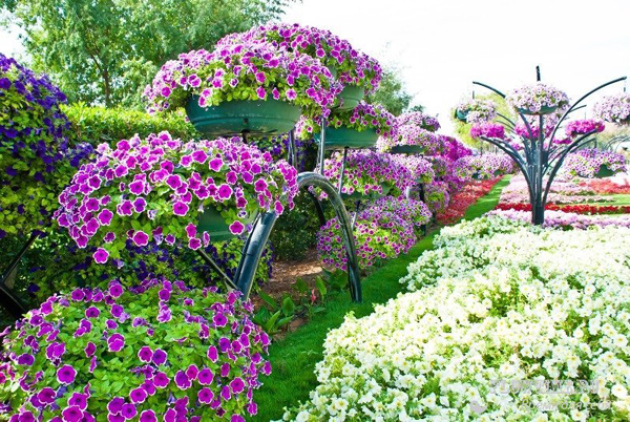

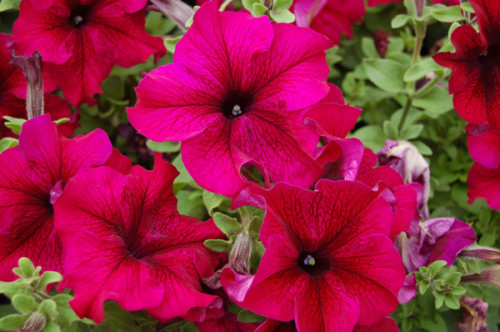
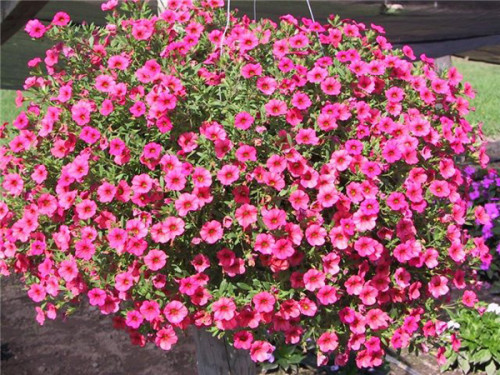
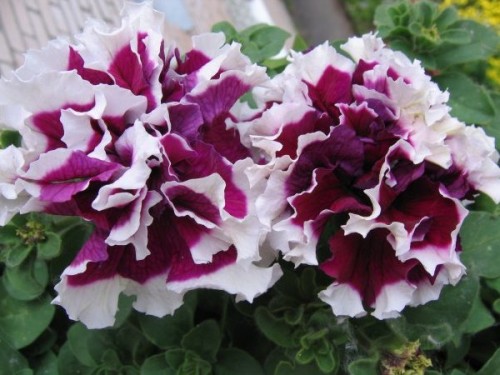
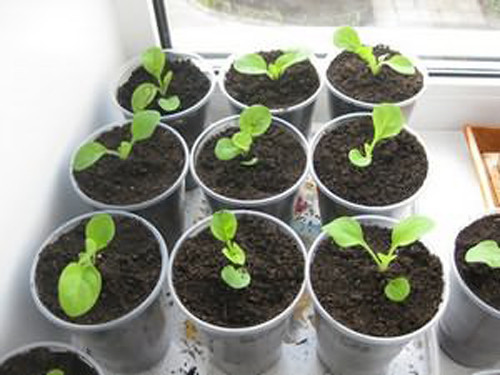
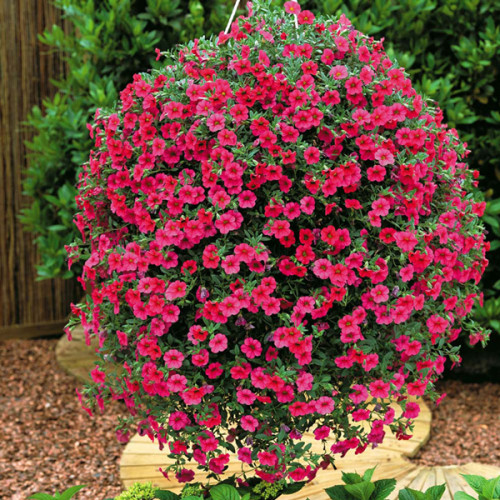
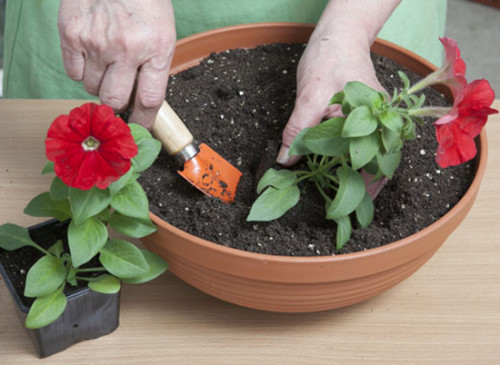
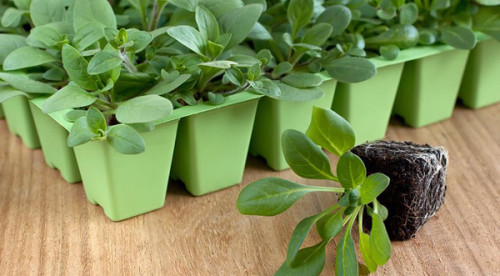
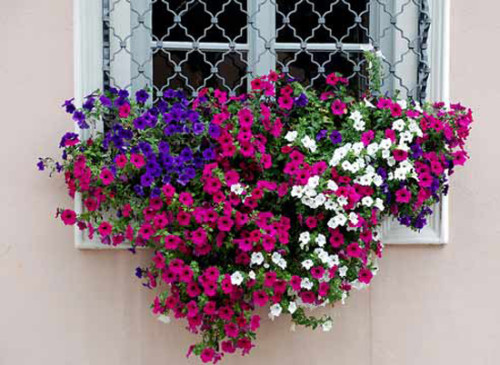
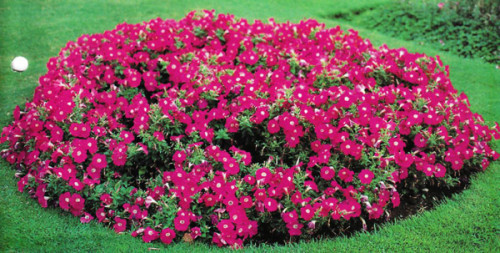
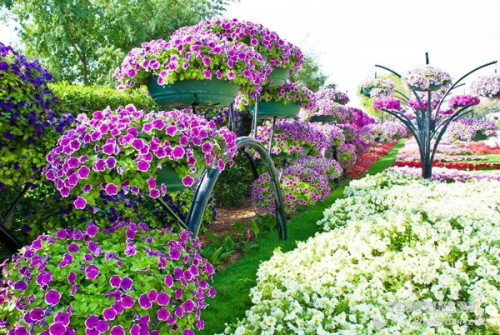












 Start a discussion ...
Start a discussion ...